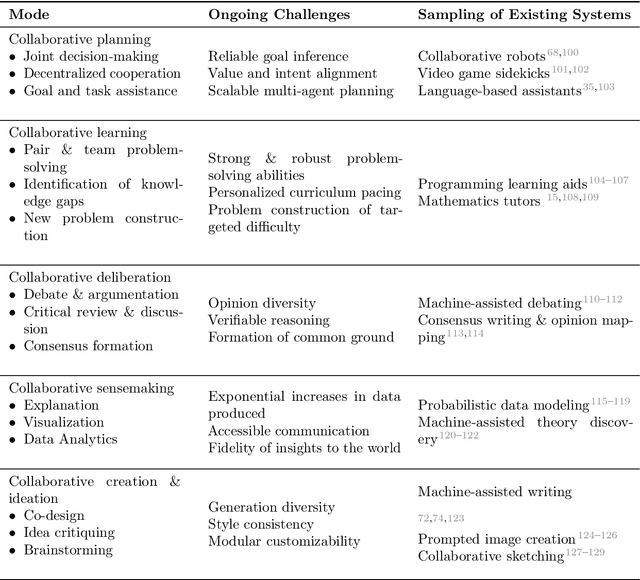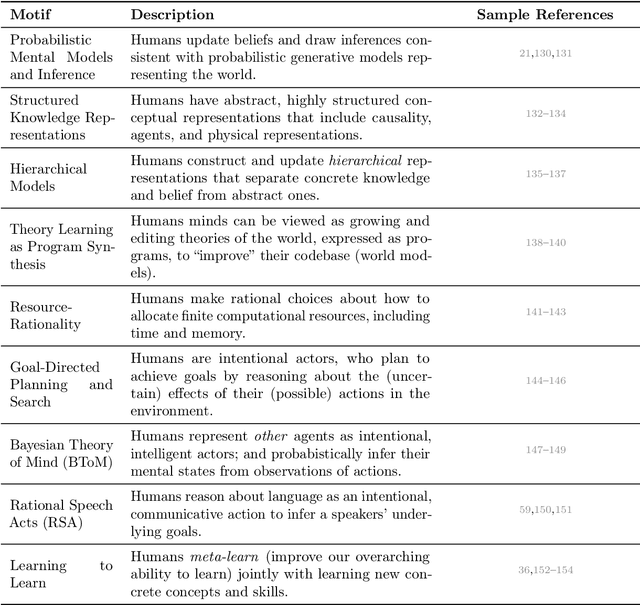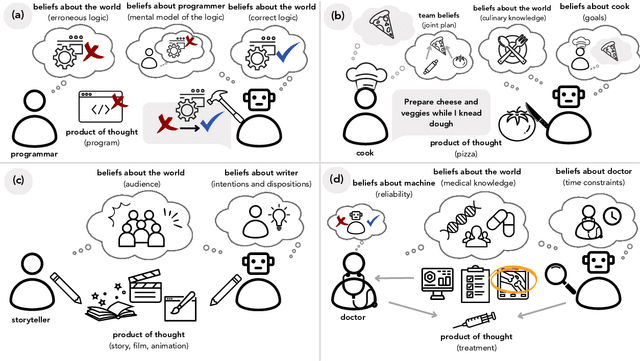Umang Bhatt
Unequal Uncertainty: Rethinking Algorithmic Interventions for Mitigating Discrimination from AI
Aug 11, 2025Abstract:Uncertainty in artificial intelligence (AI) predictions poses urgent legal and ethical challenges for AI-assisted decision-making. We examine two algorithmic interventions that act as guardrails for human-AI collaboration: selective abstention, which withholds high-uncertainty predictions from human decision-makers, and selective friction, which delivers those predictions together with salient warnings or disclosures that slow the decision process. Research has shown that selective abstention based on uncertainty can inadvertently exacerbate disparities and disadvantage under-represented groups that disproportionately receive uncertain predictions. In this paper, we provide the first integrated socio-technical and legal analysis of uncertainty-based algorithmic interventions. Through two case studies, AI-assisted consumer credit decisions and AI-assisted content moderation, we demonstrate how the seemingly neutral use of uncertainty thresholds can trigger discriminatory impacts. We argue that, although both interventions pose risks of unlawful discrimination under UK law, selective frictions offer a promising pathway toward fairer and more accountable AI-assisted decision-making by preserving transparency and encouraging more cautious human judgment.
When Should We Orchestrate Multiple Agents?
Mar 17, 2025Abstract:Strategies for orchestrating the interactions between multiple agents, both human and artificial, can wildly overestimate performance and underestimate the cost of orchestration. We design a framework to orchestrate agents under realistic conditions, such as inference costs or availability constraints. We show theoretically that orchestration is only effective if there are performance or cost differentials between agents. We then empirically demonstrate how orchestration between multiple agents can be helpful for selecting agents in a simulated environment, picking a learning strategy in the infamous Rogers' Paradox from social science, and outsourcing tasks to other agents during a question-answer task in a user study.
Faster, Cheaper, Better: Multi-Objective Hyperparameter Optimization for LLM and RAG Systems
Feb 25, 2025



Abstract:While Retrieval Augmented Generation (RAG) has emerged as a popular technique for improving Large Language Model (LLM) systems, it introduces a large number of choices, parameters and hyperparameters that must be made or tuned. This includes the LLM, embedding, and ranker models themselves, as well as hyperparameters governing individual RAG components. Yet, collectively optimizing the entire configuration in a RAG or LLM system remains under-explored - especially in multi-objective settings - due to intractably large solution spaces, noisy objective evaluations, and the high cost of evaluations. In this work, we introduce the first approach for multi-objective parameter optimization of cost, latency, safety and alignment over entire LLM and RAG systems. We find that Bayesian optimization methods significantly outperform baseline approaches, obtaining a superior Pareto front on two new RAG benchmark tasks. We conclude our work with important considerations for practitioners who are designing multi-objective RAG systems, highlighting nuances such as how optimal configurations may not generalize across tasks and objectives.
Building Machines that Learn and Think with People
Jul 22, 2024



Abstract:What do we want from machine intelligence? We envision machines that are not just tools for thought, but partners in thought: reasonable, insightful, knowledgeable, reliable, and trustworthy systems that think with us. Current artificial intelligence (AI) systems satisfy some of these criteria, some of the time. In this Perspective, we show how the science of collaborative cognition can be put to work to engineer systems that really can be called ``thought partners,'' systems built to meet our expectations and complement our limitations. We lay out several modes of collaborative thought in which humans and AI thought partners can engage and propose desiderata for human-compatible thought partnerships. Drawing on motifs from computational cognitive science, we motivate an alternative scaling path for the design of thought partners and ecosystems around their use through a Bayesian lens, whereby the partners we construct actively build and reason over models of the human and world.
Large Language Models Must Be Taught to Know What They Don't Know
Jun 12, 2024



Abstract:When using large language models (LLMs) in high-stakes applications, we need to know when we can trust their predictions. Some works argue that prompting high-performance LLMs is sufficient to produce calibrated uncertainties, while others introduce sampling methods that can be prohibitively expensive. In this work, we first argue that prompting on its own is insufficient to achieve good calibration and then show that fine-tuning on a small dataset of correct and incorrect answers can create an uncertainty estimate with good generalization and small computational overhead. We show that a thousand graded examples are sufficient to outperform baseline methods and that training through the features of a model is necessary for good performance and tractable for large open-source models when using LoRA. We also investigate the mechanisms that enable reliable LLM uncertainty estimation, finding that many models can be used as general-purpose uncertainty estimators, applicable not just to their own uncertainties but also the uncertainty of other models. Lastly, we show that uncertainty estimates inform human use of LLMs in human-AI collaborative settings through a user study.
Representational Alignment Supports Effective Machine Teaching
Jun 06, 2024Abstract:A good teacher should not only be knowledgeable; but should be able to communicate in a way that the student understands -- to share the student's representation of the world. In this work, we integrate insights from machine teaching and pragmatic communication with the burgeoning literature on representational alignment to characterize a utility curve defining a relationship between representational alignment and teacher capability for promoting student learning. To explore the characteristics of this utility curve, we design a supervised learning environment that disentangles representational alignment from teacher accuracy. We conduct extensive computational experiments with machines teaching machines, complemented by a series of experiments in which machines teach humans. Drawing on our findings that improved representational alignment with a student improves student learning outcomes (i.e., task accuracy), we design a classroom matching procedure that assigns students to teachers based on the utility curve. If we are to design effective machine teachers, it is not enough to build teachers that are accurate -- we want teachers that can align, representationally, to their students too.
When Should Algorithms Resign?
Feb 28, 2024
Abstract:This paper discusses algorithmic resignation, a strategic approach for managing the use of AI systems within organizations. Algorithmic resignation involves the deliberate and informed disengagement from AI assistance in certain scenarios, by embedding governance mechanisms directly into AI systems. Our proposal is not merely about disuse of AI but includes guiding when and how these systems should be used or avoided. We discuss the multifaceted benefits of algorithmic resignation, spanning economic efficiency, reputational gains, and legal compliance. Further, we outline the operationalization of resignation through various methods such as positive and negative nudges, stakeholder incentive alignment, and careful consideration of the level of AI engagement. Using techniques like barring access to AI outputs selectively or providing explicit disclaimers on system performance, algorithmic resignation not only mitigates risks associated with AI but also leverages its benefits, ensuring the responsible and effective use of AI systems.
Comparing Abstraction in Humans and Large Language Models Using Multimodal Serial Reproduction
Feb 06, 2024



Abstract:Humans extract useful abstractions of the world from noisy sensory data. Serial reproduction allows us to study how people construe the world through a paradigm similar to the game of telephone, where one person observes a stimulus and reproduces it for the next to form a chain of reproductions. Past serial reproduction experiments typically employ a single sensory modality, but humans often communicate abstractions of the world to each other through language. To investigate the effect language on the formation of abstractions, we implement a novel multimodal serial reproduction framework by asking people who receive a visual stimulus to reproduce it in a linguistic format, and vice versa. We ran unimodal and multimodal chains with both humans and GPT-4 and find that adding language as a modality has a larger effect on human reproductions than GPT-4's. This suggests human visual and linguistic representations are more dissociable than those of GPT-4.
FeedbackLogs: Recording and Incorporating Stakeholder Feedback into Machine Learning Pipelines
Jul 28, 2023



Abstract:Even though machine learning (ML) pipelines affect an increasing array of stakeholders, there is little work on how input from stakeholders is recorded and incorporated. We propose FeedbackLogs, addenda to existing documentation of ML pipelines, to track the input of multiple stakeholders. Each log records important details about the feedback collection process, the feedback itself, and how the feedback is used to update the ML pipeline. In this paper, we introduce and formalise a process for collecting a FeedbackLog. We also provide concrete use cases where FeedbackLogs can be employed as evidence for algorithmic auditing and as a tool to record updates based on stakeholder feedback.
Selective Concept Models: Permitting Stakeholder Customisation at Test-Time
Jun 14, 2023Abstract:Concept-based models perform prediction using a set of concepts that are interpretable to stakeholders. However, such models often involve a fixed, large number of concepts, which may place a substantial cognitive load on stakeholders. We propose Selective COncept Models (SCOMs) which make predictions using only a subset of concepts and can be customised by stakeholders at test-time according to their preferences. We show that SCOMs only require a fraction of the total concepts to achieve optimal accuracy on multiple real-world datasets. Further, we collect and release a new dataset, CUB-Sel, consisting of human concept set selections for 900 bird images from the popular CUB dataset. Using CUB-Sel, we show that humans have unique individual preferences for the choice of concepts they prefer to reason about, and struggle to identify the most theoretically informative concepts. The customisation and concept selection provided by SCOM improves the efficiency of interpretation and intervention for stakeholders.
 Add to Chrome
Add to Chrome Add to Firefox
Add to Firefox Add to Edge
Add to Edge